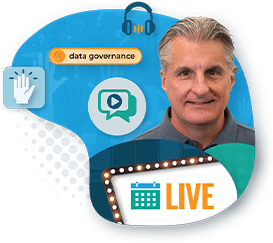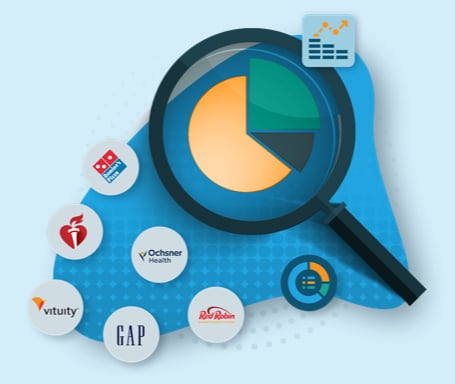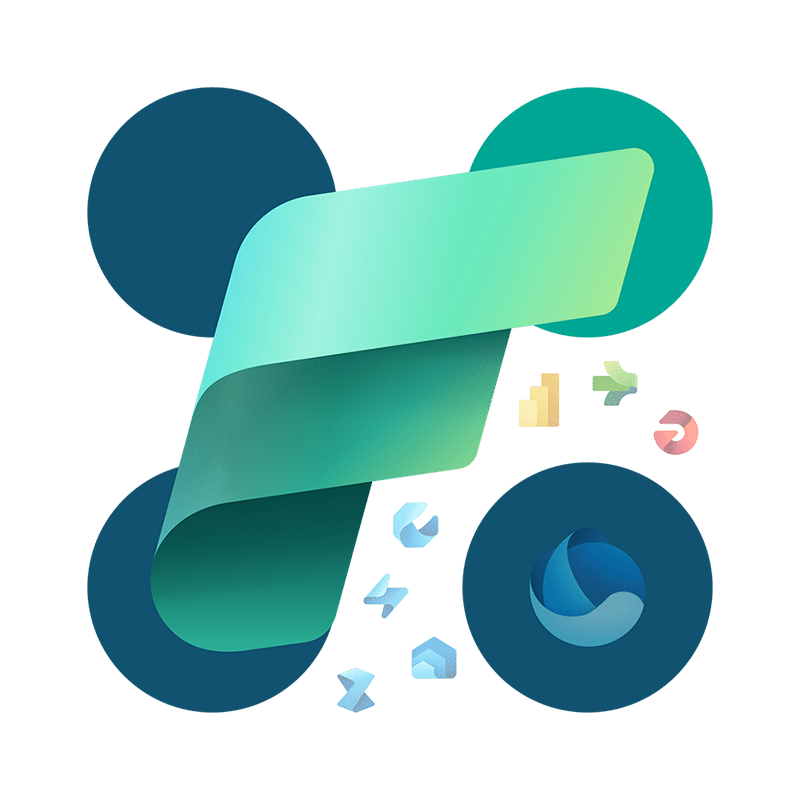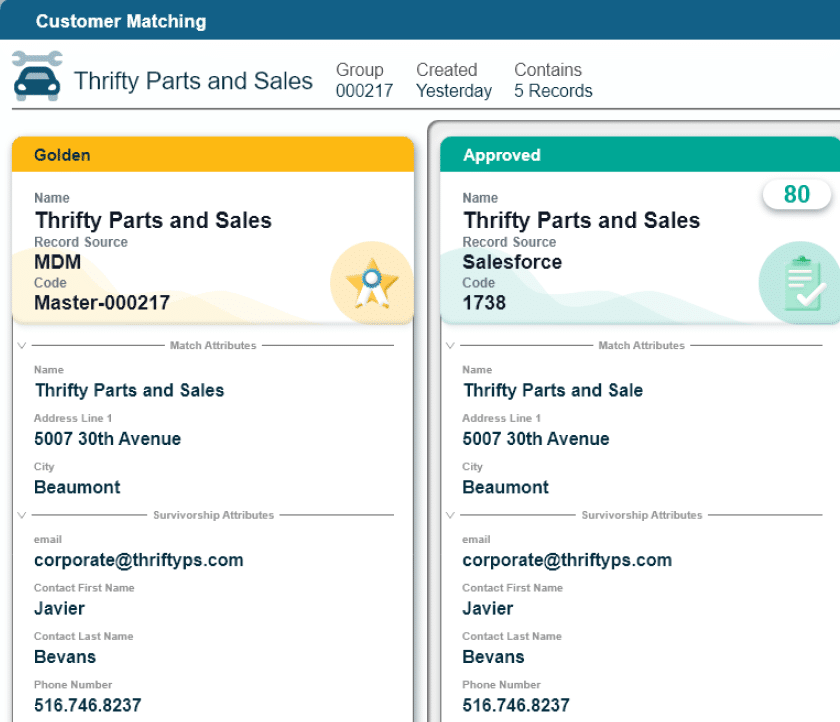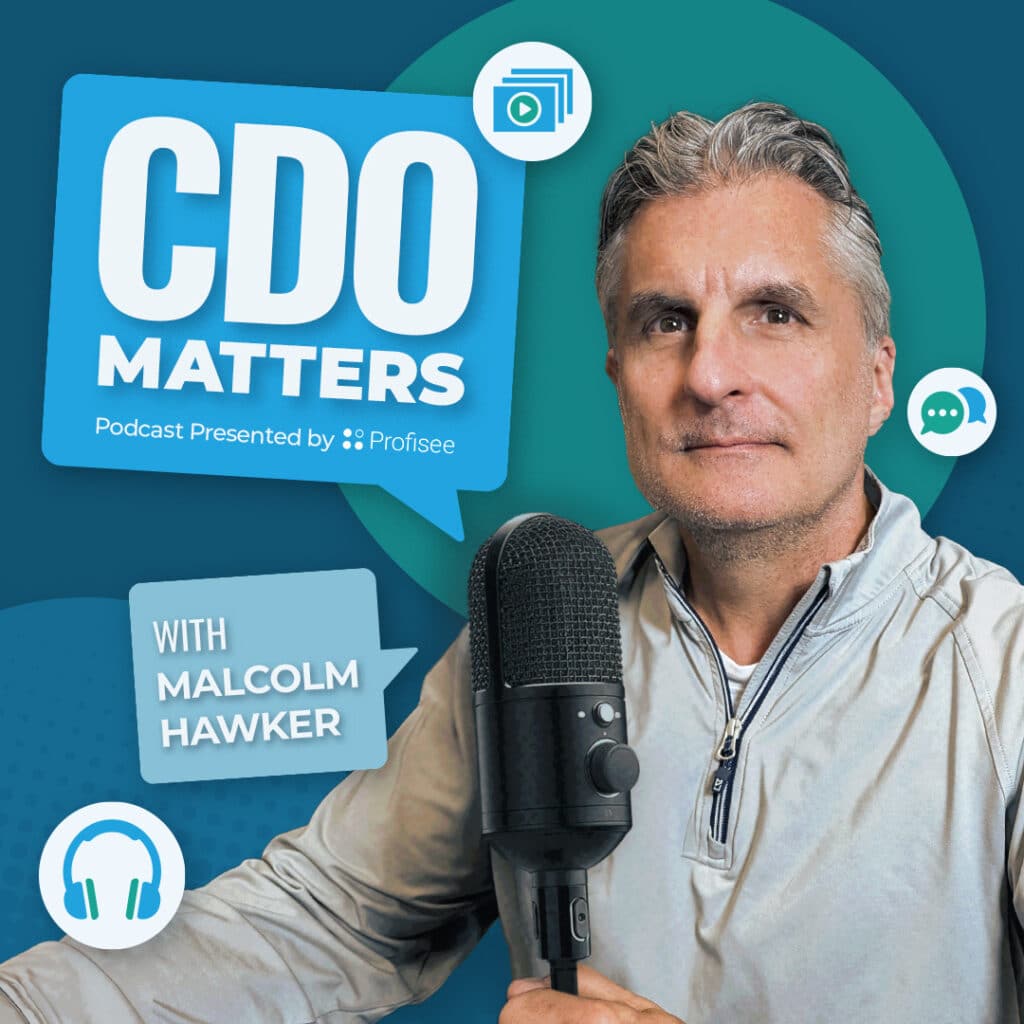Episode Overview:
Your familiar with all the processes your marketing organization is utilizing for managing its data? Are you familiar with the marketing data lexicon, and can you define key terms like onboarding, activating, or harmonizing? Are you working closely with data scientists in your marketing organization?
If you answered no to any of these questions, then you should definitely check out the latest episode of the CDO Matters Podcast. In this episode Malcolm and his guest, Shubh Sinha, the CEO of Integral, go deep into the world of marketing data, and what data leaders should know about this rapidly evolving space.
Episode Links & Resources:
Good morning. Good afternoon. Good evening. Good whatever time it is, wherever you are in the world.
This is Malcolm Hawker. I’m the host of the CDO Matters podcast, and thank you for listening. Thank you for watching. Thank you for tuning in. Thank you for subscribing.
Thank you for being here today.
I’m excited to talk about, the dark arts of marketing.
This conversation is gonna be all about what you as a CDO or a data and analytics leader or a data professional may or, more intriguingly, may not know about what marketing organizations are doing with data in in the marketing function. The fun stuff that marketers are doing, the problems that marketers are solving that may sound actually very familiar to some of the problems that you as a data leader are solving. So my goal my goal with this podcast today is to maybe shine a light on some stuff that may be happening in your marketing organization that you’re not aware of. Maybe you are.
And if you are, hey. That’s great. But I suspect you probably aren’t given my experiences in traversing these worlds. So with that said, I couldn’t be more excited to be joined today by Shubh Sinha.
He is the CEO of Intrigal, who is playing an interesting role in this space. We’ll talk a little bit later on about what Intrigal is doing. But, Shubh, thank you for joining.
Thank you for having me. I’m looking forward to the conversation today.
Right on. Me me too. So let’s talk a little bit about marketing and marketing data and what what marketers are get are are are doing out there with data. And I’ll I’ll start my question with with a little bit of a of a story.
I used to work oh, by the way, we didn’t talk about this when we were doing our prep, but I used to work for this company called Neustar. Do you ever if you are you familiar with with Neustar?
Very, very familiar.
Okay. So NuStar bought an what a company that was doing what’s called onboarding.
And do you remember who who did they who did they buy, Shubh?
I think my ad tech history fails me at the moment. It But I think they bought onboarding. Yeah. Yeah.
They they bought a company that competes with a company called LiveRamp, and you used to work at at LiveRamp. So LiveRamp does what marketers call onboarding.
And this company, my my previous employer, a few a few lifetimes ago, Neustar bought a company that did onboarding. And I’m like, and I’m a I’m a data guy.
And a classic data and analytics studio data guy. And I’m like, onboarding? What what what is what is this onboarding thing? What what tell me more.
So, Shubhh, you tell me. What what does I I was gonna go into my definition, but what does onboarding mean to you from a marketing perspective?
Yeah. Yeah. Definitely. And this is one of those things when I got into ad tech, having no background in ad tech or martech, I realized people have their own definitions. But I think most simply, you know, the idea of onboarding is exactly what an onboard ramp is in the physical world. You take a set of data, and you’re trying to activate an ad or create an ad from that data and then send it to someone, or a a platform so that someone can see it. So, you know, an ad that you see on TV, an ad that you’ve seen online, that was onboarded via a a digital ramp in a way, and the digital ramp is the company that was bought by New Store, LiveRamp, and some others.
Oh, okay. So what I find interesting is is just like even the lexicon. Right? The the words that are used to describe processes, like so let’s take the word activate.
It’s a very common word in the marketing world, and it’s very common in a technology that I know reasonably well called CDPs, customer data platforms. And it’s the idea that you that you you take data and you operationalize it. Would you agree?
Correct.
Yeah. Okay. So so I have a customer record. I’ve got a record for Joe Smith and Joe Smith at Gmail dot com, and maybe you’ve got some address information about Joe Smith.
Who knows? But I’m gonna put the record for Joe Smith into Adobe so that Joe Adobe can make, informed decisions about how to target ads to Joe. Is that that’s how we could a correct process? Yeah?
Okay. Yeah. That’s a good high level. Well, but so even just the word activate. Right?
Like, data people would be like, what what’s that? Right? Like, I I don’t even I don’t even use that that word. Another thing that is interesting to me around this whole idea of onboarding, if if if you look at, like, classic onboarding, a lot of the processes there let’s take a a you’ve got a file of information about your customers.
Right? And and and you want to onboard that or or you want to create a file that is ready for downstream consumption that you can activate, and you and you activate it in this onboarding process.
A lot of the processes there now this is if this gets to what kind of Integral does in the play in the space that Integral plays in, really look would familiar would look familiar to most data people. But what is what are some of the details that go into onboarding? Is there, like, is there integration? Is there some sort of matching? What’s what’s happening behind the scenes?
Definitely. And I I think onboarding is one of those phenomenons or concepts that scales as you get more and more complicated or more and more nuanced in your strategy. Right? And so you have super small companies that just have you know, they they have a a CRM list that they wanna target, and so they set out an ad based off of some sort of attribute in a dataset.
But I think as you get bigger, and especially what I saw at LiveRamp where we worked with the Fortune two thousand and all these large enterprises, you have teams, you have subteams, you have segmentations of different datasets. And so it gets quite complicated as to who am I targeting, how am I targeting them, because I think, fundamentally, just to zoom back up for a minute, I think the whole purpose of onboarding is to get some sort of message to somebody in a way that they understand. And so, you know, pharma historically is very famous for spending tons of money on TV ads because they typically cater to a population that watches TV.
And it would not work the same way with, like, a d to c brand who typically targets online. And and so the onboarding has to be somewhat, tailored to the type of strategy you’re running. And I think where you’re getting at is as you get deeper and deeper, into onboarding as a strategy, you start noticing, hey. How can I get these ads to people, or how can I get these messages to people in a way that’s very tailored to them?
And then you have this concept of data harmonization, which I’m sure the data folks know as well. But how do you have segments that are multifaceted? So not just not just email, not just phone number, but some blend of in in a privacy safe way, of course, some blend of location mixed with demographic, geographic, like, all these different segments together. And so I think as it gets more and more nuanced and as you want to become more and more nuanced in your ad spend and your marketing spend, you start harmonizing different datasets together.
And that’s all a part of onboarding because, ultimately, onboarding is activating a particular particular dataset, and the result of that is some sort of messaging delivered to people like you and me. But you wanna be bespoke and you wanna be very specific because ad dollars and marketing dollars are not cheap either. And so I think that’s where onboarding gets a lot more complicated and nuanced and why LiveRamp and others have built out product suites around onboarding where, you know, could be a simple topic but becomes quite convoluted very quickly.
Well, what about what about things like rules? So so what and a Nuancey wave of what I just heard you say is that you can have very specific or customized rules for how you potentially harmonize data. So in my world, I would call that matching.
But what you just described was maybe at a segment level or maybe at an individual level to the degree that you have the right to do that.
Where where do those rules live and who decides what those rules are? Are they driven at a campaign level, and are they configured into a into a live ramp, or are they are they something that is done directly to the data? Like, what what what’s what’s happening here?
Yeah. And I I think it’s actually, configurable at a few different levels or a few different steps in the process. But I think at each point, you have an intersection of user preferences. So in this case, a data scientist, let’s say, a data scientist preferences and a data scientist working in a marketing org, for example.
And so you have campaign configuration tools that are built into these large companies that allow you to only do certain things that are within, yeah, conventional security policies, conventional privacy policies. But I think as you get more and more deep into your strategy or as you get more and more complicated, you also start bringing in these very novel datasets. And so, you know, in my world, regulated data, which I’ll define as data about people like you and me or source from people like you and me, but is governed by HIPAA and CCPA, not only is it configured at the campaign level, but almost at a stop before when integral is gets involved, we ensure that the dataset that is going to get loaded into a live ramp or loaded into a platform is itself compliant with different policies such as HIPAA or CCPA.
And then you have another set of configurations at the campaign level to ensure that even if the data is technically compliant, you don’t misuse it or you have rules around potentially bad actors. And so I think what you’re getting at is very, very accurate where there’s there’s a ton of different safeguards in place. But I think the what goes into it is a mix of I, as a data scientist and a marketing work, what do I want, and then what can I do? And then there’s multiple levels at which that either collides or harmonizes, and and a big reason why we exist is because I think it collides a bunch.
And so that’s that’s how I see it, where each step has a a mix of user preferences as well as safeguards built into it.
So that’s interesting. So the rules you know, when when I would say rules to a data person, generally, they would assume that I was talking about kind of, like, data quality rules or the rules used to match. When you heard me say rules, you were talking more about kind of compliance of what you can and what you can’t do with the data, which which is an interesting twist in and of itself. Not not saying that that’s wrong. Obviously, you’re a CEO of a company. It’s obviously right for that use case, but here’s just another example of kind of the differences in the way that maybe traditional data people would look at things on an IT side, and marketers would look at things. So let’s let’s take a trip in a in a time machine.
I’ll I’ll I’ll tell you a little story, because I’m old.
But I used to work for this this Internet startup called AOL, and the year was, I’ll say, nineteen ninety eight, believe it or not. And we were just starting to target ads. And I worked I I managed a team of about thirty engineers that was responsible for doing ad targeting.
And we had this problem in in that we wanted to target directly to people, but we couldn’t target directly to people. And we weren’t even supposed to know who the people were, even though we could tie back to people in in our in our customer file if we had to. So to solve this problem of not knowing who or or kind of remaining kind of anonymous, what we did with our data, like millions and millions of rows of of of information about people that had PII in it, We shipped it off to this third party that did stuff to it, basically anonymized the data and gave it back to us so we could do everything that we wanted to it.
And at that point, we would put them into very highly tailored segments, Right? That were that were it wasn’t me. It wasn’t me, but it was, like, awfully close to me. Right?
At a at a kind of a demographic at a segment like, well, is that still happening today?
That process I just described, is that still happening?
Yeah. Yeah. That is, definitely a practice that is still, pretty common today. And I would even say, or I would go a step further. I think as more and more not that nineteen ninety eight wasn’t that long ago, so not that old.
It’s, it’s it’s It was a while.
It was a while.
Thank you. You’re very kind.
But I would say all those practices have gotten even more robust. And so what I mean by that is that third party you mentioned, you know, we’re in many ways, we’re a version of that third party. But just speaking about it objectively, the third parties have gotten a lot more well versed in regulations. They’ve gotten a lot more well versed in data analysis and data splicing and dicing.
And so when you go out or what when someone, in AO’s position sends out that data, it comes back a lot more tightly scoped, from a regulation perspective. So, you know, you’re clear and good to go. It also comes back more, I would say, tightly aligned with whatever the business goals were that were commensurate with that dataset. And then the last part there, I think, is that that audience or what we’ll say is like a look alike, in many ways where maybe you don’t target the exact person, but you target the people like them.
Those technologies have also gotten better, especially in the age of AI where, again, like, it’s it’s getting close and it’s producing copies of but not targeting that person. Like, that has become a a standard practice because there’s a way to now get there compliantly and and and, from an accuracy perspective tightly so that you can actually still do what you need to do as a company, but then the patient or not the patient in this case, consumer still gets the value of their privacy, but they also get tailored messages, developed for them and then delivered to them. And I think we’ve seen that a little bit in consumer sentiment where, you know, of course, the classic, I hate ads and I hate marketing still appears, but you also see the other side of it where when people receive tailored messages about what they may or may not need at least today, tomorrow, and the future, there’s started to be more consumer sentiment that is more appreciative of that rather than what I think used to happen, which was, you know, a little bit of a spray and pray.
And even I you know, I don’t like, ads in general, but I like the ones that are actually unique and catered to me because they they can solve a problem at some at some level for me. And so I think the the practices you mentioned are not only still here, but they’ve gotten more robust, as to ensure that, to a degree, everybody wins in a way.
But a lot of these so so so first of all, I I what I described is is pretty close to the core value prop of Integral. Right? I mean, that’s what what you’re doing is making sure that there is HIPAA compliance and and GDPR compliance or whatever compliance that that is kinda baked into the data that marketers generally generally marketers, maybe not entirely always marketers, but but but generally marketers are are using. Correct?
Correct. And and just to take that a step further, to go back to your example, you mentioned you send it out you sent that dataset out to a third party. I think we’re a a better version of that third party where we’re integrated with data providers as well as the end customers, in this case, AOL, such that you could be sending data continuously as opposed to thinking about things as like, oh, this is my one time kinda activation, as opposed to, you know, as data sets updated, refresh all of that, your compliance stays in real time at the pace of your data. And so, we’re, I’ll just say you’re accurate on that compliant enablement, but we make sure that the base of that data is not only compliant, but has a lot of juice to squeeze when it goes downstream for some sort of look alike analysis or for some sort of ad targeting.
Yeah.
This may be a bit of an oddball question, and we’re kind of maybe getting off the the road here. But I’m sorry. My my my mind is spinning.
If I’m somebody who wants to drop out, right, like, you know, obviously, it’s don’t just mindlessly keep on clicking yes to to user agreements.
But I I guess I mean, are there are there ways that that I could effectively do that, or or is it would it you know, how would how would I, like, drop out and make sure that I’m not getting marketed to? And may maybe this I’m making this too bit too much about me, but I just find this a fascinating question because there are so many big agencies out there that have so much data.
Right? And how would you unwind that ball if you wanted to?
Yeah. Definitely. And as a consumer whose data is out there as well, I I can definitely relate to that. And so, just to kinda hone in on on on that, it’s it’s a form of compliance, and I think compliance takes on so many meanings. And the thing that we’re uniquely focused on is compliant data customization.
Meaning, when that data is coming in, we ensure that whatever’s in that data or whatever combination of data come out of Integral, they have a very low risk according to policy of catching or, like, targeting someone like you and me. Meaning, like, you know, there’s a sufficient level of obfuscation in the dataset to where you can act on as a company, but it’s still safe to do so because the chance of picking one or, you know, two individuals is very, very low. And then that’s one form of compliance. There’s other infrastructure, compliance companies that ensure that, you know, you have the right GCP modules, the right AWS, infrastructure, all of that.
So I call I call that, like, structural compliance. And I think what you’re getting at is user oriented compliance where Yes. You know, the datasets opt ins and opt outs, those are typically managed at the onboarding platform. And so I know tons of companies that power that, power that onboarding at the very end.
It’s almost like a imagine like a toll booth or like a traffic guard. As that data is going out, if a user or a customer has opted out, they should have registered with the data broker, the onboarder, and in in many in many times because those are the ones who actually own the the data assets to be able to take back, so to speak, for removal. And so on the way out to onboarding, the traffic cop, usually in the form of some sort of software at at an onboarding destination, can take out or check what’s been opted in, what’s been opted out so that that data never leaves.
Of course, the world is not perfect, so I’m sure there’s still exceptions that occur. But, typically, it’s the onboarding, destinations that have something on the website or data brokers have something on their website that say opt out, because recent legislation has required it.
Okay. So I I would have to believe that given this is about compliance at an individual level, what we’re talking about here is data related almost exclusively to people. Yes? Or are there other kind of datasets in your world that would maybe touch on other things like cars maybe or, like, what people own?
Or is this all just really mostly just about data related to people?
Well, it’s it’s it’s funny because those are in many ways the same thing. And so what what I mean by that though Alright. It’s where, you know, if you think about me, I I don’t own a car, but let’s just say I did, and I’ve lived in three different places. I’m from a small town in Tennessee. I’ve lived in San Francisco, and now I live in New York. And let’s say I own a different car in each city, and I have all these different attributes about me, my income, my job, my prescriptions, all these all these different things that represent the life of Shubh.
So while my car inherently is not a data point about me, say it’s like a red Ferrari, in in in New York. Maybe that’s not something you think in New York, but, like, a red Ferrari in my small town in Tennessee. That’s technically not data about me, but it’s an attribute that can be pinned back to me, in which case it becomes a personal data point that we integral consider as part of this identifiability analysis, which essentially is, like, what’s the odds finding Shubh in a dataset? Because we wanna ensure that Shubh is sufficiently obfuscated at the individual level, but his cohort level characteristics can still be used for commercial distribution, r and d, etcetera.
And so that’s where, car data in particular, not really a dataset usually comes about. That being said, we’ve we’ve processed tons and tons of ad and marketing related datasets, in which case users or people like us, consumers, have attributes like owns a car, owns a dog, here’s the car, here’s the dog, and those can become identifiable attributes, which then get factored into our compliance analysis or general compliance analysis, I should say.
How how often in the marketing organizations you guys are working with are there data scientists?
So we typically come out of a data team’s budget, and we target a a data scientist A marketing data a a marketing data team.
Yes? Okay.
Yeah. That’s correct. And so, yeah, that’s a very important nuance. Yeah. So we’re typically coming out of a marketing data team’s budget, and the stakeholders or users in our platform are typically, stakeholders who have a or have skin in the game with regards to marketing campaigns, the marketing analysis that’s happening. And so it’s it’s a big intersection between data science driven thinking and and and positions, but under the context of a marketing driven goal set set of goals.
So, I mean, ballpark, like, most of most then of the the marketing analytics teams that you’re working with have some form of data science? Is that is that would be fair?
Yeah. Yeah. And and just to give a little bit more color there, you know, we have three functions going or three segments, enterprise, mid market, and SMB, especially what you notice in the enterprise with I’ll just broadly call them the Fortune two thousand. Tons and tons of data science influence in that process and data science stakeholders, just because that that intersection is very, very strong. Yeah.
Alright. So interesting. That’s something that I wonder, you know, how often CDOs would be working with those data scientists because data scientists are very obviously kind of at the nexus of the current craze around AI.
How many conversations are you having around AI, and where would something like onboarding where would something like what Integral does feed into a data science process?
Yeah.
So we do have an AI segment to our business in the sense that these are should it say AI process for for GBM?
I said a data science process. We were just talking about that.
And a in AI, specifically AI, not just classic data science, but just AI.
Apologies. Yeah. Definitely. And and that’s where I’ll I’ll bifurcate, AI native versus becoming AI enabled in in a way.
And so, you know, the the Fortune two thousand, they’re not necessarily AI native. They’ve been around for a while. Before AI, they’ll be around after. But they’re be they’re using AI in their processes, and they have a distinct motion from some of the companies that we work with that weren’t even around two or three years ago and have you know, they’ve become very critical, and they’ve even just become possible after some of the recent advancements by some of the the learning models that I’m sure we’re all familiar with.
And and what I noticed in the, I’ll say AI native companies, so the ones that have just started up in the last two, three years, their data science function is ingrained from the beginning. And so even if I don’t have a data scientist on the call with me, that data science nomenclature, the concerns, the goals is just kind of baked into that process because, I mean, a lot of AI, it it boils down to a set of, or a set of inputs that are are an equation of sorts. And one of the most substantial inputs is data science and fidelity, which could also be known as quality, the source of the data itself, the quantity of.
Like, it’s great to get data, but can we get more and more of it? Can compliance stay, in real time with model iteration speed? That’s something that we, are are very, focused on. Like, these models wanna train and guzzle up tons and tons of data, but you have to ensure that you’re not bogged down by compliance timelines, to to get to product innovation.
So those are, yeah, those are the a lot of the conversations we have there. And then on the other side of companies that are larger, but have AI initiatives, you know, they’re they’re bringing in data scientists in droves to make sure that Yeah. They can achieve something along the lines of, like, an AI native feeling of, hey. Data science is always here.
But there’s a very active, deliberate, and explicit call out. Hey. Like, what is the fidelity of this data? How much more of it can we get?
Because especially for these large Fortune two thousand, the juice has to be worth the squeeze as opposed to being experimental, but worth it for some of these bigger startups. So that’s where you see a little bit of contrast, but data science is still, as you said, at the nexus of a lot of the the driving behavior.
So of these marketing organizations that you’re working with, are are you are you getting insights into some of the bigger headaches that CMOs have got related to their data? And and if so, what would be, like, the the top three headaches that a CMO would have about their data? Right? In your conversations, are they are they are they concerned about, you know, lack of integration across systems? Are they concerned about the fidelity, quality? Are they concerned about cost? What are some of the things that are, from a data perspective, that keeping CMOs up at night?
Yeah. And and just to kinda root this all, you know, a chief a chief marketing officer is responsible for boosting sales through targeted messaging. And so, you know, there’s a I think maybe what gets lost is that there’s some real pressure, associated with that role because you’re using an action to try and influence, what is effectively another department, but, you know, there should be harmony between them. And so just kinda thinking about that, a lot of the tools at a CMO’s disposal should result in very tailored messaging, tailored data in order to speak to people like you and me.
So we’ll go purchase a product or a service and and, you know, boost numbers. And so what that means, though, is that how do you personalize at scale, or how do you tailor at scale? Because it’s it’s not enough of a win just to get, you know, a few people. It’s also you know, you can’t just spray and pray the budget either.
It’s like somewhere in between. Right? You have to have some nuance there. And and so why I’m going through all this is because working backwards from that base, what we’ve noticed are, you know, speed of data enablement.
So sometimes you get good data, sometimes you get bad data, sometimes you don’t find out until the end. But that speed, if it if it’s taking you ten weeks to find out you got a bad dataset, that is just lost time that’s never gonna come back. You’d rather find out in a day. Right?
And so a big value proposition for Integral is that we’re a replacement to consultants who take a long time, and we can help you understand the time to value or get the time to value for your data down way, way or, like, way, way lesser than than what it is today. And so I’ll call it speed of data enablement.
The other one is, data fidelity. So, you know, specifically in our world where you’re leveraging regulated consumer data, which is typically a gold mine of information, If you go through standard compliance processes, you might lose half your dataset. But, again, you don’t know that until, a few weeks later. And so but you have to work with it because it’s the best you have.
And so fidelity of data and you can think about it, like, if you put in ten million dollars worth of data and you get fifty percent of it back, you just lost five million dollars right off the bat before you even went out to go spend that ad budget. And so, you know, one is, like, I’ll call it, like, data fidelity, data quality, maybe, which I think is probably super familiar to the data stakeholders, of this podcast. And then for the last one, I’ll say, data harmonization is a big one or data experimentation maybe is a real another way to say it. People like you and me, we’re increasingly getting more multifaceted.
Consumer data sharing is growing twenty five percent year over year. And so as a CMO, your job is to understand each dimension of a person at scale so that when you combine them and deliver something tailored, you know, it digests well for people like you and me, but in a way that we understand. And so data harmonization is a big problem because you don’t like, you have to be testing datasets constantly, and you have to work with data vendors. And it’s this huge collaboration challenge as well as this huge data burden that you have to take on.
And so, you know, integrals got poised for all of them, but we’ve noticed those are the those are the challenges that even I noticed at LiveRamp when I was in between all these different companies and and what really drove us to start the the company.
So so that’s interesting. Again, I think that those three would also be keeping CDOs up at night, and but they wouldn’t describe them that way. Right? Like, what what you what you describe kind of you know, you’re using the term fidelity, which I think seems to loosely align to quality.
Mhmm. Or maybe effectiveness.
But so data quality is certainly keeping CDOs up at night.
You know, date data integration and matching, you’re certainly keeping them up at night or what you’re calling harmonization, right, which is Joe Smith, Joseph Smith, JM Smith. How do we how do we tie all those things together? Do you agree that’s that’s that’s what you mean by harmonization?
Yeah. Okay.
Yeah. And then I’ll go even once further to say that those attributes, those attributes for, like, a Joe and a Joseph, you know, it’s people like you and me, we’re dynamic. And so we do change our name, or we go by a different name. And that means we also have maybe potentially different behaviors associated with that other name. And so it becomes a real, real deep challenge at scale. And so, all this to say, you’re you’re right. It just becomes a lot wider of a problem in terms of imagining a dataset, in which case reconciliation or harmonization becomes even more challenging.
Well, so let let’s drill down drill down on that just a little bit. We were talking about cars. What if one dataset says it’s, Ford and the other one says it’s a BMW?
Is is there are there any tools out there in a marketer’s tool belt to deal with that today? If so, what do they do?
There’s not a, I’ll I’ll, call it a silver bullet. There’s not silver bullet today, and that’s why, even even, you know, multibillion dollar public companies like the one I used to work for, Liveframe, they have, a multitude of solutions for this because unless you go up to that, you know, let’s say, Joe in this case, and ask them, yeah, what what’s the what’s the right answer, which is, of course, not feasible, you have to end up figuring it out through the other data points available. And so if Joe has a BMW in Tennessee, if Joseph has a Ford in California, and then Joe has a BMW in New York, let’s just say, I mean, on its face, it’s possible that, you know, he has a BMW twice.
He probably drove a Ford at some point, and that data data point got logged, but maybe it was a rental. Maybe and so thinking about just, like, human level reasoning, then the the next solution or the the next step down there is from a technology perspective, how many different datasets can I leverage to establish a source of truth or a benchmark that I can consider as a source of truth and then check against that? And so might seem like guessing and checking the whole time, but the idea is to form the spine that you can measure against such that Yeah. In this case, maybe it’s I have a high confidence because he had a BMW twice within three years.
He probably didn’t buy another car just for a year. And so it’s probably accurate based off this corpus, of source of truth data that I’ve established. But what you’re saying is a real challenge, and and that’s why, you know, for us, like, we see as this neutral compliance entity, we see all data passing through the ecosystem. And so that allows us to have this corpus more at the ready or more constructed, whereas other companies, they have it deconstructed, and they put it together on a case by case basis.
So there’s no one step solution, yet, yeah, for this. Alright.
Opportunity for you, entrepreneurs out there. How do you do MDM at scale for marketing use cases? That’s the problem. Because doing this onesie twosie is easy, but doing it at scale, at a transactional level is really hard. And the you actually described it. You used the word establish a spine, and I actually kind of I I like that metaphor.
In in my world, we would say create a reference set. Right? Something that you know is the source of truth and you can bounce something against and check it against. Yes or no.
That’s a way to do harmonization at reasonably well at scale if you’re confident in what you’ve established as the gold master. If you’re not, if you’re having to match pairs of records against each other across, you know, billions of rows in in milliseconds, forget about it. You’re not gonna do it. But you will be able to do the kind of check against the the the master.
I I find this this fascinating. Just different words for the same for the same thing.
You you you talked about, like, hey. Let me go we’ll go try this. We’ll go try this. Is the juice worth worth the squeeze is the phrase that you gave.
When it comes to effectiveness, when it comes to measuring effectiveness of these datasets or maybe even measuring the effectiveness that that something that that Integral will do, how is a marketer doing that? Is are they executing campaigns and then saying, okay. Well, I got a five percent bump, then the data must be good? Or or are they getting down at a data level and saying, okay.
I know this one individual data or are they doing AB testing? What what are they doing to measure value within the marketing organizations of this data?
Yeah. And and the answer there is it’s a multilayered approach. And I think you hit on some of the layers. Right?
And so, if you think about most of the customers that we work with in the Fortune two thousand, they have data budgets that, under the marketing org, of course, they have data budgets to go out and purchase third party datasets to integrate with their first party dataset or to combine, in order to create a rich dataset to then go act off of for marketing purposes. And so, you know, right off the bat, as soon as you purchase the dataset, you have an ROI clock that starts ticking because data is, of course, now free. And so, you know, in this multilayered approach, you have one, okay, I purchased ten million dollars worth of data.
After compliance, how much of my data is left? Because not inherently what you purchase is not necessarily compliant. It has to go through the process. So right off the bat, you say you get yeah.
Say with consultants, you lose approximately fifty percent. So you’re now down to five million in terms of your, what what you’ve lost and and then what you have. In which case, then you go in for data quality checks, and your your data scientists, they’re also not free. And so they’re also factored into the ROI analysis here of, is my data scientist having to deal with messy consumer data?
Or did it come in neatly packaged? In which case, we can start finding insights and doing segmentations immediately to say, oh, I wanna target dog owners, car owners, etcetera. And so there’s almost like a data activation effort in a way, and you can measure that through how many data scientists are having to be, involved in cleaning up the data. And then I think, you know, the third step here is the actual campaign cost and campaign calibration where, okay, I I saw that this, you know, this campaign in the Southeast boosted sales by five percent, which, you know, amazing that that that attribution exists.
In which case, then you kind of wrap around this whole ROI and you say, was my data purchase? Was my data activation effort? And was the boost on sales, you know, did this all align to be net positive ROI? Or is that five percent actually, you know, it took too much to get there and the five percent is not even worth it anymore?
It’s like those are the types of discussions where you have a multilayered approach as to the ROI. But then, of course, you have distinct orgs responsible for each step. And so I’m sure the five percent boost in sales, like, that org is probably very, very happy because that is a pretty exceptional exceptional boost there.
Well, for a Fortune two thousand five percent, absolutely. Right? Like, when when when you’re talking, you know, hundreds of millions of dollars marketing budgets per quarter, yeah, five percent is absolutely meaningful. That would be phenomenal.
I mean, to me, the key takeaway there is that is that we’ll never ever get to full causality.
And and and, you know, probably a bit of a fool’s errand to say, yes. This one dollar spent on this one marketing thing actually drove one dollar in sales, but marketers are are doing this. I know they’re doing this. I know that they are doing attribution. They’re doing campaign effectiveness. They’re doing ROI.
So the message there to CDOs is if marketers are doing this, so can you. Alright. I find all of this fascinating. I I could probably keep talking for hours about the unique the uniqueness of marketing organizations, but some of my key takeaways just from this just in this conversation.
Some of the things that CDOs are doing all day every day, managing for data quality. They’re doing MDM. They’re doing matching. Right?
They’re building pipelines. They’re they’re doing integrations. They’re taking data from multiple places, putting it into one place and applying some rules to it to get to get clarity on who are my customers or my suppliers or my assets. Marketers are doing the exact same thing.
They may not be using the same technology. They may be using different words, but they’re doing some of the exact same things. So I would invite you, my data friends, to go have lunch with somebody in your marketing organization and ask them what their data headaches are and ask them how maybe you could help. I don’t know if you can.
I think you probably can. And there’s probably opportunities for the CDO organization and the CMO organization to work a little bit closer on some of these things, particularly the AI stuff. Shubh, it’s been awesome. I’m I’m like, I’m gonna go and look up more words. I was, you know, I I did the deep dive on, on onboarding and activation, but, I need to I need to figure out fidelity a little bit more and maybe start spicing some of the stuff into the things that I post on LinkedIn. Thank you so much, Shubh, for for for sharing your your your knowledge. What’s the best way for people to stay in touch with you and to connect with you and to learn more about what Integral does?
Yeah. And and thank you for having me. I mean, this was a a great conversation that I think intertwined a few different threads that I think are gonna be very meaningful for the data world and the marketing world, which in my in my world, they’re many of the the same in in many ways, because we serve both. But for, you know, staying in touch and whatnot, of course, my LinkedIn for, for my personal profile, as well as, like, following our company page integral, because what we are doing is intersecting data and marketing and yeah, many more use cases to come. And and, yeah, I look for I’m I’m pretty open, on on LinkedIn in terms of the content that we post and, like, I’m always looking to connect with you new people. And so, if if there’s a a message you wanna send, please send it. I would be happy to chat.
Awesome. Well, best of luck. Continue with Integral. Thank you again for joining Shubh. It’s been awesome.
To our listeners, our subscribers, our followers, thank you for tuning in to another episode of the CDO Matters podcast. Hey. If you’ve got a topic you want to learn more about, if you’ve got a topic that you would want me to be speaking about, if you’ve got somebody that you think that I should be talking to on the CDM Matters podcast, DM me on LinkedIn.
I am open. I would love to always hear ideas about people we should be talking to because my goal here is to spread the word and is to spread knowledge. So don’t be afraid to reach out. Thanks for listening. We will see you on another episode of CDO Matters sometime very soon. Thanks, all. Bye for now.
ABOUT THE SHOW
